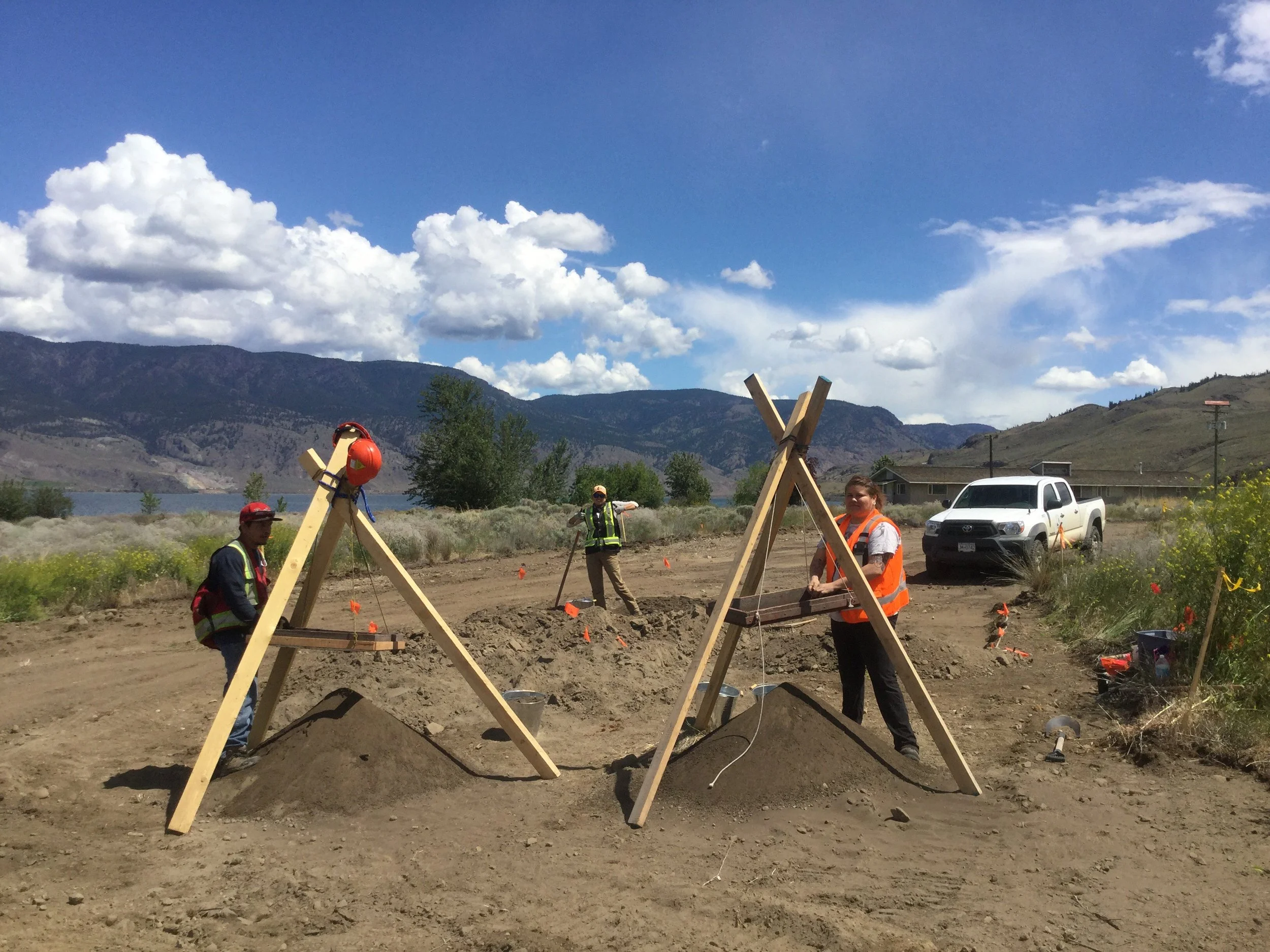Field archaeology is often synonymous with digging, with the common public perception of archaeologists painstakingly exposing buried artifacts in the ground with brushes and picks.
Although a large part of an archaeologist’s work, especially in the southern interior of B.C., consists of various digging activities (shovel testing, hand excavation and sifting sediments), this is not universally the case on every project.
There are many circumstances in which archaeologists try to avoid or limit digging in the ground to search for buried artifacts while still completing the necessary work.
This is because the act of digging in the ground is such a destructive endeavour in itself.
Digging through buried archaeological deposits irreparably impacts, and essentially destroys, archaeological sites.
The act of excavating through an archaeological site is most commonly undertaken in concert with development activities that are slated to disturb the ground surface, such as highway construction, pipeline installation or other infrastructure projects.
In these cases, the proposed development will disturb a specific area of ground and archaeologists assess (usually through digging) whether the development activities will impact buried archaeological sites.
If an archaeological site is planned to be destroyed or irreversibly altered by the impending development, then the site is excavated in advance by archaeology crews to gather as much data as possible about the site’s occupants before the opportunity is lost forever.
There is a rich and deep history of sites dating to 11,000 years or older in this area, with much more to learn about how people were living millennia ago.
On the other hand, if proposed developments are only in the early planning stages, then archaeology crews take the path of least destruction while looking for ancient sites.
This usually involves systematic pedestrian surveys through proposed project areas, with crews searching for evidence of archaeological sites visible on the ground surface.
Many archaeological sites can be identified through this technique, such as scatters of stone artifacts on the ground, the remains of pithouses, hunting blinds, trails or culturally modified trees.
The preference is always to observe and record, then leave the archaeological site in place.
Artifacts are always left where they are found unless under threat of development.
In 2022, I was involved in a research project in Secwepemcúlecw (Secwépemc lands).
With no imminent development guiding the field work, we were able to instead select survey areas based on terrain features on the landscape in order to gain a more regional perspective of land use.
We identified more than a dozen new archaeological sites through surface observation only — with no digging needed.
These sites consisted of lengthy trail corridors and stone tool artifact scatters identified in remote, high-elevation environments. In these instances, we would document the site, record the location and types of artifacts present, take photographs and leave the site undisturbed.
These archaeological sites are thousands of years old and unnecessary collection of artifacts or unnecessary digging through the site sediments to search for additional artifacts would only destroy this non-renewable resource.
When in doubt, the default recommendation for archaeologists and the general public alike is to always leave an archaeological site where it is found.
Phoebe Murphy is a Kamloops-based archeologist. Interested in more? Go online to republicofarchaeology.ca.

